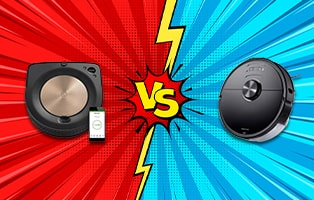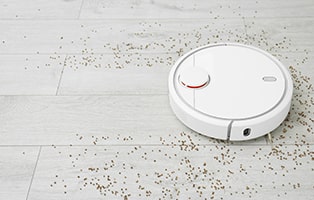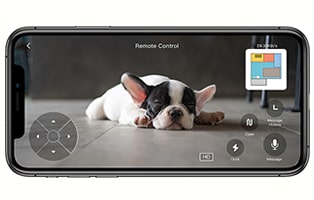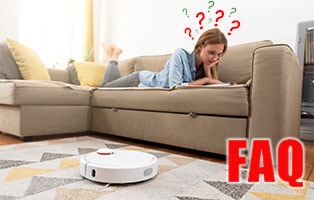There’s a method to the madness in how robot vacuum cleaners work.
Robot vacuums have come a long way since Swedish manufacturer Electrolux unveiled the first robotic vacuum in 1996 called the “Trilobite”. Six years later, the US company iRobot launched the very first Roomba, which has now become a familiar nickname for robot vacuums in general. Today, iRobot has produced over 40 different Roomba models, many of which are still being sold.
iRobot may be the biggest name in robot vacuums, but they are not a monopoly by any means. Other companies such as Neato Robotics, Dyson, Roborock, and others have their own lines of high-quality robot vacuums.
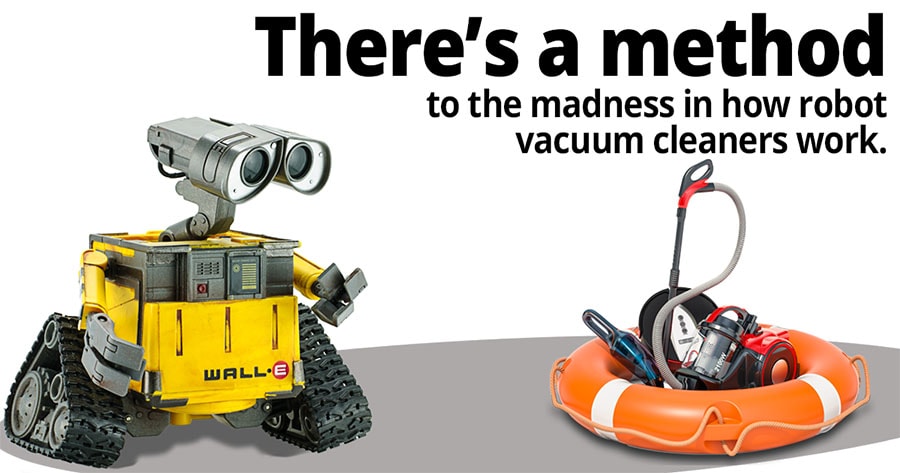
One thing most people notice is that these little devices often come with a big price tag. So if you’re not familiar with how a robot vacuum works, you may be hesitant to invest in one for yourself. But as the old adage goes, knowledge is power, so the more you know, the wiser shopper you’ll be.
What every robotic vacuum has in common
No matter the price point or features, every robot vacuum has a few things in common.
- They have some type of navigation software to move them across the floor. This can range from a very random pattern to a highly sophisticated mapping program.
- They use suction and some type of agitator (brush roller) like a classic vacuum to remove and collect dirt from the floor.
- They have a dustbin that collects dirt.
- They are cordless and need to recharge between cycles.
From here, every model varies in how sophisticated these features are. Typically, the more advanced features it has, the more the vacuum will cost.
Navigation: Oh vacuum, where art thou?
It goes without saying that a robot vacuum’s most important feature (besides the vacuum part) is getting around. The very first robot vacs had a totally random pattern. They’d run until they hit a wall or furniture, then they’d turn around and go off in a random direction. This inevitably led to some missed areas on the floor and dents in the walls.
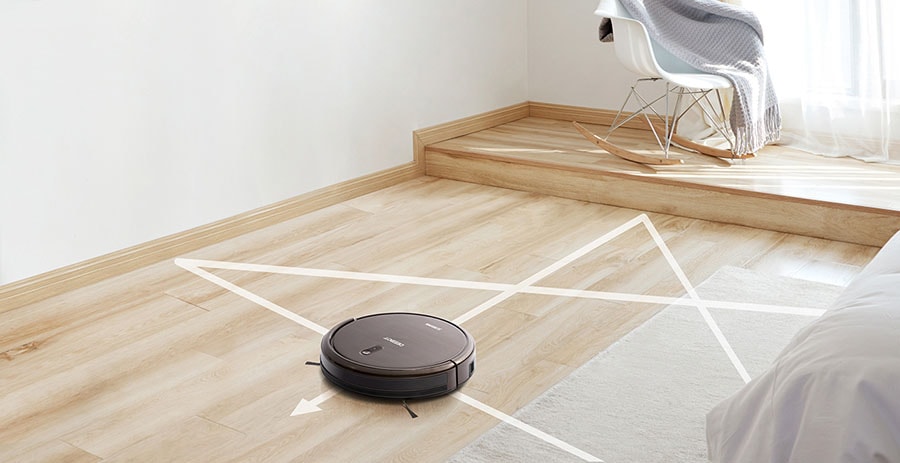
Today’s robot vacs use a variety of technological features for navigation. Some are still mostly a random pattern (check out the Eufy RoboVac 11S), while others use pre-programmed algorithms to set the cleaning course. The most advanced models use sophisticated navigation software to map each room so they don’t pass over the same spot twice. Some even store floor plans (like the new iRobot Roomba s9+) so that once learned, all you need to do is tell it to clean a specific room, and off it will go.
To aid with better navigation, nearly all robot vacs on the market have various sensors that keep it from damaging itself or doing damage to your home. Here are a few you will find:
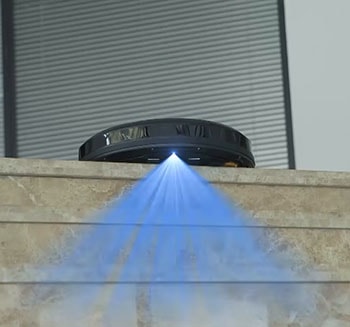
- Cliff sensors – These use infrared light that bounces off objects, sending the signal back to a receiver on the vac. If the signal doesn’t bounce back, the receiver assumes a “cliff” such as a staircase is coming up, so it tells the vacuum to back away and head another direction.
- Object sensors – These are mechanical sensors, much like a car’s airbag sensors, located on the sides of the vacuum. When it bumps into an object, the sensors tell it to back up, rotate, and move in another direction.
- Wall sensors – Most vacuums just treat walls as objects. The more advanced models use infrared sensors on the bumper to detect walls so they can follow right up to the edge without bumping against them. These are great for edge and corner cleaning.
- Dirt sensors – Not as common, usually only found on the most advanced models. These sensors are located on the bottom of the vacuum near the agitator brush. They’re acoustic sensors, so when the brush kicks up a bunch of dirt, it causes a lot of vibration on the sensors’ metal plates. This tells the vacuum to either increase the suction or go over that area again.
To keep the vacuum out of unwanted areas, some vacuums come with physical “virtual walls” which are magnetic strips you use to block off rooms, etc. Advanced models have “no-go zones” that you can set via mobile app that keeps the vacuum from venturing into forbidden territory.
Robot vacuum suction: The #1 most essential feature
Models vary in both suction power and design. The suction or vacuum power works just like a regular vacuum. A motor pulls air up from under the vacuum to draw in the dirt. Then the air passes through a filter, and clean air comes out from the output vent in the sides or back of the machine.
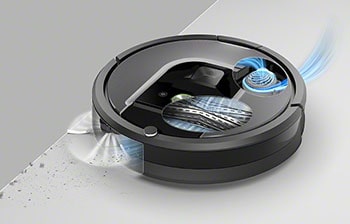
Most robot vacs have manual cleaning modes that allow you to adjust the suction power from low to high for various floor types and situations, such as edge or spot cleaning. More advanced models have auto-adjusting vacuum power that increases the suction on carpet or heavily soiled areas.
Most robot vacuums have at least one spinning side brush on the front corner which is the first point of contact for dirt. Side brushes stick out from the vacuum body and sweep dirt inward so the vacuum can suck it up. These are particularly useful for wall edges and corners, especially for circular-shaped vacuums.
Beneath the unit is an agitator consisting of one or two counter-rotating brush rollers that grab dirt and toss it into the dustbin inside the machine. These brushes may be classic bristle style or a rubber-blade pattern.
Robot vacuum dustbins: The dirty truth
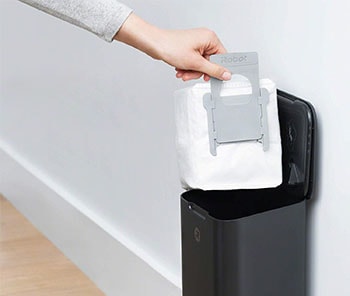
All models have an onboard dustbin that collects dirt. These can vary somewhat in size and placement on the machine. Allergy-fighting models are well-sealed and have HEPA-style filters that trap tiny allergens so they don’t escape with the exhaust air.
Emptying the dustbin is one of the few manual tasks you’ll have to do yourself with most robot vacuums. If you have pets that shed a lot or if you have kids that leave a trail of crumbs everywhere they go like Hansel and Gretel, you’ll be emptying the dustbin pretty often
BUT…thanks to iRobot, we now have robot vacuums that are self-emptying! To a certain extent, that is. The Roomba i7+ and S9+ both have charging docks that are also dirt bins. When the vacuum returns to the dock, it unloads its dirt haul into the dirt collection bag inside the bin. The bags can hold up to 30 cycles of dirt.
So yes, you’ll still have to eventually remove the dirt collection bag, but a lot less frequently than you would with a regular robot vac dustbin.
Charging docks: Because even robots need downtime
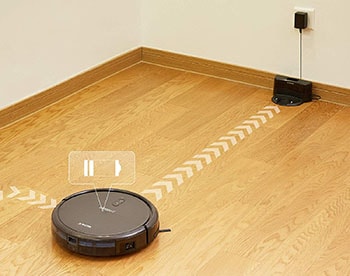
All robot vacuums are cordless and require a battery to operate. Eventually, the battery will run out of charge, so that’s where a charging dock comes into play.
More basic vacuums will simply die somewhere in the house. You’ll have to go on a search and rescue mission to find them and place them on the charging dock. Many recent models (like the Roomba 960) return to the charging dock on their own when the battery is low. Some will recharge and then head back out to finish the cycle they started.
As mentioned in the previous section, the most advanced charging docks now include a dirt bin in which the vacuum self-empties the dirt it collects from each cycle.
Every charging dock needs some floor space, especially those with auto-redocking, so the vacuum has a clear path to dock. Be prepared to dedicate a few square feet of floor space for this.
Exciting advancements
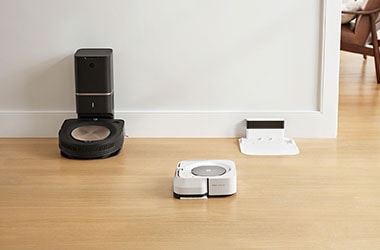
Robot vacuums are keeping up with the times. Many models include WiFi and can be operated via mobile apps. Some can even be operated with voice controls via home integration systems like Alexa or Google Assistant.
More recently, vacuuming robots have teamed up with robot mops for a tag-team duo of floor cleaning. The Roomba i7+ and s9+ can integrate with the Braava Jet M6 robot mop to both sweep and mop your hard floors. When the vacuum is done and back on the dock, it signals the mop to set out to clean the freshly-swept floors.
You can find a review for the the Braava Jet M6 and other reliable floor mopping robots here on our site.
We’re excited to see where the future of robotic cleaning devices takes us in coming years.
Robot Tips & Tricks
